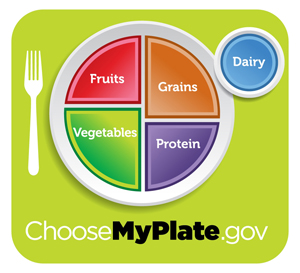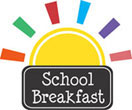2025 Theme: "My day, my rights"
with an emphasis on amplifying children's voices to ensure their rights are heard and respected. This theme, promoted by UNICEF, highlights the importance of children's self-expression and participation in decisions that affect them.
Child rights are human rights. They are non-negotiable and universal. But in too many places today, children’s rights are being misunderstood, disregarded, or even denied and attacked.
Upholding children’s rights is the path to a better world today, tomorrow, and in the future.
Join us on this World Children’s Day and listen to the future.
By listening to children, we can fulfil their right to self-expression, understand their ideas for a better world, and incorporate their priorities into our actions today.
Discover what’s happening and take part.
The future of tomorrow is the children of today.
A review of organizations dedicated to improving the quality of Children's lives. Presented through songs, news reports, mission statements, and children.
Academy of Nutrition and Dietetics, Kids Eat Right
We Day
We Day
Listen to the future.Stand up for children’s rights.
152 million children are trapped in child labor. Most of them are in agriculture. #Childlabour is depriving millions of girls and boys of their childhoods. Every child has the right to a childhood. #StopChildLabour @FAO
Love Is All | Playing For Change
By resolution 836(IX) of 14 December 1954, the General Assembly recommended that all countries institute a Universal Children's Day, to be observed as a day of worldwide fraternity and understanding between children. It suggested that the Day was to be observed also as a day of activity devoted to promoting the ideals and objectives of the Charter and the welfare of the children of the world. The Assembly suggested to governments that the Day be observed on the date and in the way that each considers appropriate. The date, 20 November, marks the day the Assembly adopted the Declaration of the Rights of the Child in 1959 and the Convention on the Rights of the Child in 1989.
In 2000, world leaders outlined Millennium Development Goals (MDGs) – from halving extreme poverty to halting the spread of HIV/AIDS and providing universal primary education, all by the target date 2015. Though the Goals are for all humankind, they are primarily about children.
WHO 10 Facts On Nutrition
2. An indicator of chronic malnutrition is stunting. This is when children are too short for their age group. About 165 million children globally are stunted, resulting from not enough food, a vitamin-mineral poor diet, inadequate child care, and disease. As growth slows down, brain development lags, and stunted children learn poorly.
3. Wasting and bilateral edema are severe forms of malnutrition - resulting from acute food shortages and compounded by illness. About 1.5 million children die annually due to wasting. Rising food prices, food scarcity in conflict areas, and natural disasters diminish household access to appropriate and adequate food, all of which can lead to waste.
4. Essential vitamins and minerals in the diet are vital to boost immunity and healthy development. Vitamin A, zinc, iron, and iodine deficiencies are primary public health concerns. About 2 billion people are affected by inadequate iodine nutrition worldwide. More than one-third of preschool-age children globally are vitamin A deficient. Vitamin A deficiency is the leading cause of preventable blindness in children.
5. Maternal undernutrition leads to poor fetal development and a higher risk of pregnancy complications. Maternal and child undernutrition accounts for more than 10 percent of the global disease burden.
6. For healthier babies, WHO recommends exclusive breastfeeding for six months, introducing age-appropriate and safe complementary foods at six months, and continuing breastfeeding for up to two years or beyond. Worldwide, about 20% of deaths among children under five could be avoided if these feeding guidelines are followed. Appropriate feeding decreases rates of stunting and obesity and stimulates intellectual development in young children.
7. Nutritional problems in adolescents start during childhood and continue into adulthood. Anemia is a critical nutritional problem in adolescent girls. Preventing early pregnancies and assuring adequate intake of essential nutrients for developing girls can reduce maternal and child deaths later and stop cycles of malnutrition from one generation to the next. Globally, anemia affects 42% of pregnant women.
8. The rise in overweight and obesity worldwide is a significant public health challenge. People of all ages and backgrounds face this form of malnutrition. As a consequence, rates of diabetes, cardiovascular disease, and other diet-related conditions are escalating worldwide. These are very difficult to treat in places with limited resources and already overburdened health systems. About 43 million children under age five are overweight, according to 2011 figures.
9. Nutrition information is required to identify the areas where assistance is most needed. WHO released international child growth standards that provide benchmarks to compare children's nutritional status within and across countries and regions.
10. Public education is another way to improve nutritional health. Starting in China during the Beijing Olympics and continuing in other countries, WHO and the Member States will promote the "5 keys" to a healthy diet:
a. give your baby only breast milk for the first six months of life
b. eat a variety of foods
c. eat plenty of vegetables and fruits
d. eat moderate amounts of fat and oils
e. eat less salt and sugars
Resources
In November 2010, the American Dietetic Association (ADA) and ADA Foundation officially launched their first joint initiative, Kids Eat Right. The two-tiered campaign aims to mobilize ADA members to participate in childhood obesity prevention efforts and to educate families, communities, and policymakers about the importance of quality nutrition.
Mission: The Kids Eat Right campaign was launched to support public education projects and programs that address the national health concern of obesity among our children.
To learn more about the Kids Eat Right Campaign, visit:
Website. Kids Eat Right
Facebook. Kids Eat Right
"Raffi" (Raffi Cavoukian), C.M., O.B.C.
Raffi Foundation for Child Honouring
"Imagine a new idea as vital as a democracy.
Now imagine helping it spread
quickly throughout the world!
Child Honouring is one such idea,
an idea whose time has come.
Now imagine helping it spread
quickly throughout the world!
Child Honouring is one such idea,
an idea whose time has come.
- Raffi
He is known to millions as "Raffi,"" a beloved songwriter and performer, author, ecology advocate, and founder of the Centre for Child Honouring. Child Honouring is a vision for creating a humane and sustainable world by addressing the universal needs of children.
Raffi Foundation for Child Honouring and join "the compassion revolution."
Young People Marching
Turn This World Around
Raffi's tribute to humanity's hero sprang from Mandela's call to global leaders in 2000 to turn this world around for the children. In 2001, Raffi sang this for Nelson Mandela at Toronto's Ryerson University. The song expresses the essence of Raffi's Child Honouring philosophy, a children-first paradigm for societal change. A child-friendly world enriches all of us and offers the best chance to create sustainable cultures. All children want to live in peace and to follow their dreams.
As the most significant humanitarian provider of school meals worldwide, the World Food Programme ( WFP), along with governments and partners, supports education, reduces malnutrition, and promotes development, especially during crises and emergencies.
Nearly all countries worldwide have a school meals program, and about 368 million children from kindergarten to secondary school receive daily food. Governments recognize school meals as an essential tool for developing and growing children, communities, and society.
WFP provides school meals to more than 20 million children every year. But many more children do not benefit from school meals, and in countries with the highest poverty rates where school meals would make a big difference, the reach of school meal programs is far smaller.
Schools are critical in WFP's efforts to create a world where educational and nutritional opportunities reach the hungry poor. It's where we lay the foundation for future generations to grow and thrive.































